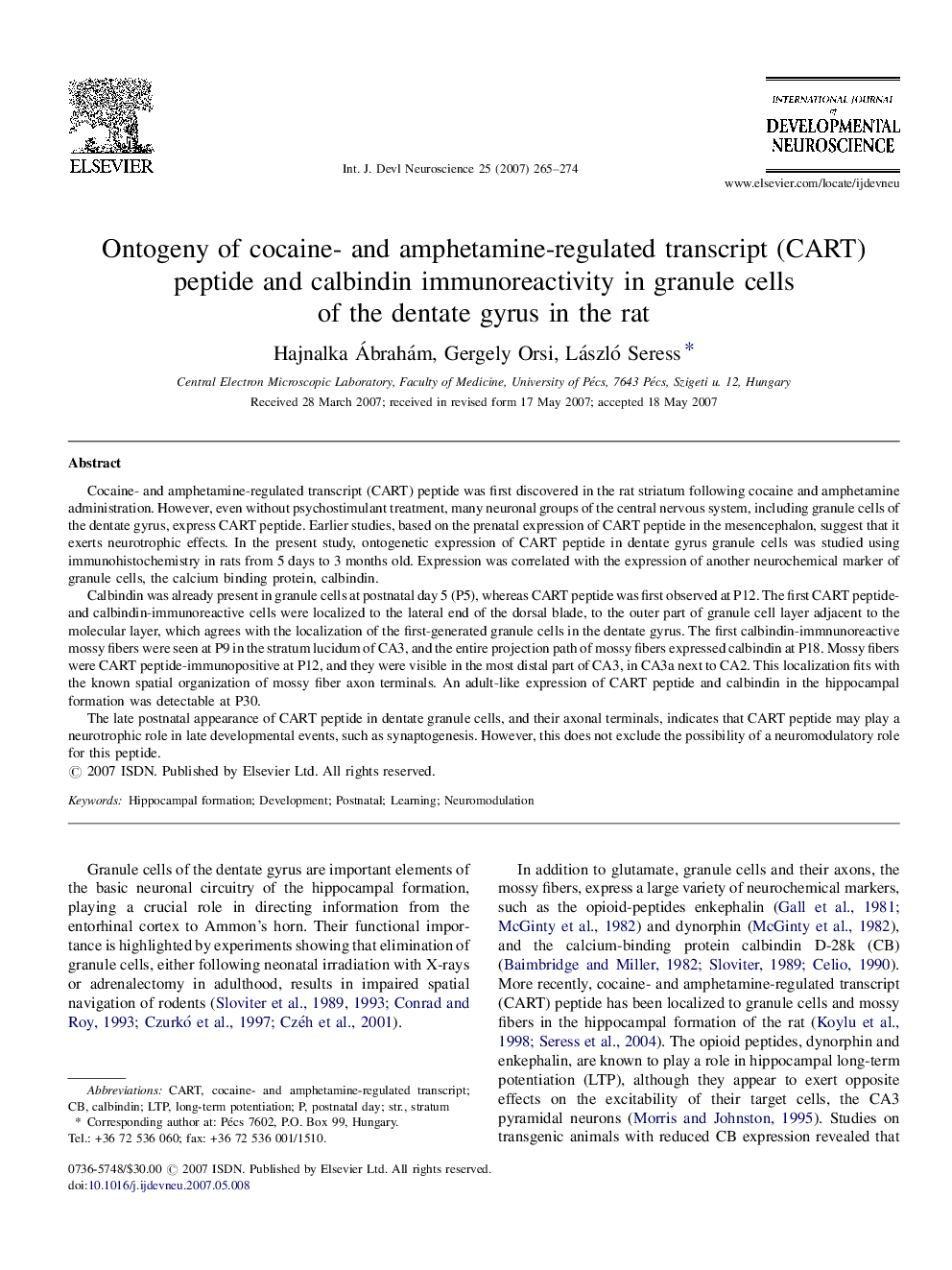| Article ID | Journal | Published Year | Pages | File Type |
|---|---|---|---|---|
| 2787077 | International Journal of Developmental Neuroscience | 2007 | 10 Pages |
Cocaine- and amphetamine-regulated transcript (CART) peptide was first discovered in the rat striatum following cocaine and amphetamine administration. However, even without psychostimulant treatment, many neuronal groups of the central nervous system, including granule cells of the dentate gyrus, express CART peptide. Earlier studies, based on the prenatal expression of CART peptide in the mesencephalon, suggest that it exerts neurotrophic effects. In the present study, ontogenetic expression of CART peptide in dentate gyrus granule cells was studied using immunohistochemistry in rats from 5 days to 3 months old. Expression was correlated with the expression of another neurochemical marker of granule cells, the calcium binding protein, calbindin.Calbindin was already present in granule cells at postnatal day 5 (P5), whereas CART peptide was first observed at P12. The first CART peptide- and calbindin-immunoreactive cells were localized to the lateral end of the dorsal blade, to the outer part of granule cell layer adjacent to the molecular layer, which agrees with the localization of the first-generated granule cells in the dentate gyrus. The first calbindin-immnunoreactive mossy fibers were seen at P9 in the stratum lucidum of CA3, and the entire projection path of mossy fibers expressed calbindin at P18. Mossy fibers were CART peptide-immunopositive at P12, and they were visible in the most distal part of CA3, in CA3a next to CA2. This localization fits with the known spatial organization of mossy fiber axon terminals. An adult-like expression of CART peptide and calbindin in the hippocampal formation was detectable at P30.The late postnatal appearance of CART peptide in dentate granule cells, and their axonal terminals, indicates that CART peptide may play a neurotrophic role in late developmental events, such as synaptogenesis. However, this does not exclude the possibility of a neuromodulatory role for this peptide.
